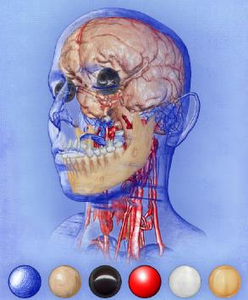Information
- Publication Type: Journal Paper with Conference Talk
- Workgroup(s)/Project(s): not specified
- Date: 2016
- Journal: Computer Graphics Forum (2016)
- Volume: 35
- Number: 3
- Location:
- Event: EuroVisSTAR2016
- Pages: 669 – 691
Abstract
A central topic in scientific visualization is the transfer function (TF) for volume rendering. The TF serves a fundamental role in translating scalar and multivariate data into color and opacity to express and reveal the relevant features present in the data studied. Beyond this core functionality, TFs also serve as a tool for encoding and utilizing domain knowledge and as an expression for visual design of material appearances. TFs also enable interactive volumetric exploration of complex data. The purpose of this state-of-the-art report (STAR) is to provide an overview of research into the various aspects of TFs, which lead to interpretation of the underlying data through the use of meaningful visual representations. The STAR classifies TF research into the following aspects: dimensionality, derived attributes, aggregated attributes, rendering aspects, automation, and user interfaces. The STAR concludes with some interesting research challenges that form the basis of an agenda for the development of next generation TF tools and methodologies.Additional Files and Images
Weblinks
No further information available.BibTeX
@article{Groeller_2016_P3,
title = "State of the Art in Transfer Functions for Direct Volume
Rendering",
author = "P. Ljung and J. Kr\"{u}ger and Eduard Gr\"{o}ller and Markus
Hadwiger and C. Hansen and Anders Ynnerman",
year = "2016",
abstract = "A central topic in scientific visualization is the transfer
function (TF) for volume rendering. The TF serves a
fundamental role in translating scalar and multivariate data
into color and opacity to express and reveal the relevant
features present in the data studied. Beyond this core
functionality, TFs also serve as a tool for encoding and
utilizing domain knowledge and as an expression for visual
design of material appearances. TFs also enable interactive
volumetric exploration of complex data. The purpose of this
state-of-the-art report (STAR) is to provide an overview of
research into the various aspects of TFs, which lead to
interpretation of the underlying data through the use of
meaningful visual representations. The STAR classifies TF
research into the following aspects: dimensionality, derived
attributes, aggregated attributes, rendering aspects,
automation, and user interfaces. The STAR concludes with
some interesting research challenges that form the basis of
an agenda for the development of next generation TF tools
and methodologies.",
journal = "Computer Graphics Forum (2016)",
volume = "35",
number = "3",
pages = "669--691",
URL = "https://www.cg.tuwien.ac.at/research/publications/2016/Groeller_2016_P3/",
}


 image
image paper
paper
